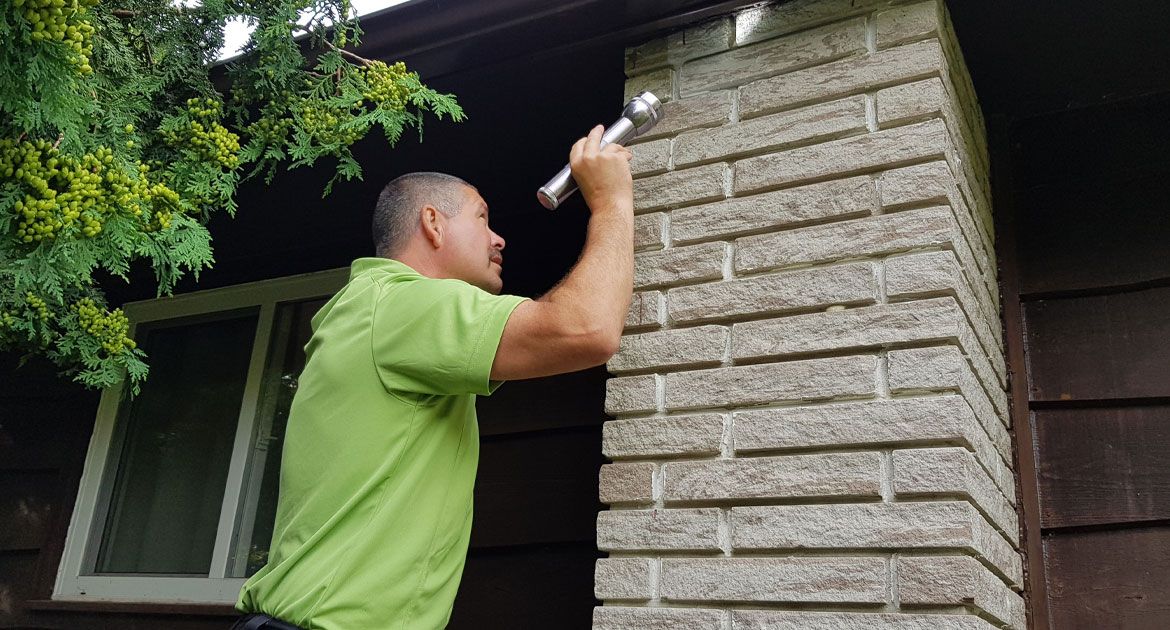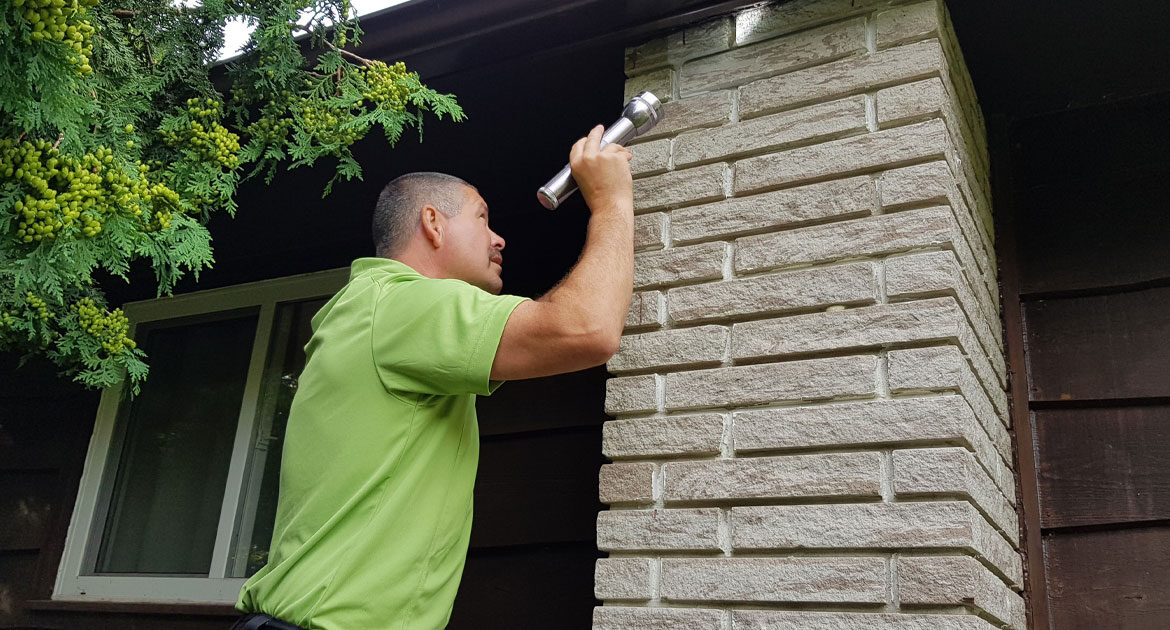When you feel that cool breeze in the air, and see leaves fluttering to the ground, you know the fall season has arrived. Autumn’s signals remind us that it’s time to think about preparing ourselves and our homes for warmth. Wildlife does the same, including mice and bats.
These creatures begin consuming food to bulk up and seek a place that gives them sufficient shelter during the cold months, which could be your home if you have not taken measures to seal wildlife entry points. Believe it or not, mice and bats often use the same entry points to gain entry into the home.
How Bats and Mice Get Inside
It may seem unlikely that a flying mammal and a crawling rodent would have similar techniques for accessing the warmth of your home. Though they don’t have precisely the same set of skills, both have traits that allow them to take advantage of existing holes and gaps in your home.
Mice and bats can both fit in small spaces, much smaller than you might realize. Mice can squeeze themselves into a hole the size of a dime. Bats can also slip through narrow gaps and holes as small as a quarter.
A mouse has incredible climbing skills and can scale textured surfaces, such as brick walls, to access entry points on the upper levels of your home. Bats sense minor changes in air currents due to differences in temperatures escaping from gaps and cracks in your home and use these currents to find the way inside.
Where They Enter
Do you know where all your wildlife entry points are? If you consider the requirements for mice and bats, it’s easy to see how you might overlook openings that invite them indoors to the comfort of your attic, chimney, basement or walls.
It doesn’t matter how old or new your house is, there are almost always areas where your home’s structure doesn’t quite meet up. Some of the most common entry points include:
- Through roof and attic vents
- Down uncapped chimney openings
- Between roofing shingles and flashing
- At the edges and eves of the roof
- Through cracks in mortar or gaps in the sealant
- Through holes cut for utility lines
Weather changes that cause materials to shrink and expand can create openings where there were none before. Additionally, mice aren’t averse to chewing through softened material to create an entry point that a bat may also take advantage of.
How To Keep Them Outside
Mice and bats are both important to our ecosystems. We don’t want to eliminate them, but we also don’t want to open our homes to them. Yet, it may seem impossible to find all potential entry points for these two critters. However, the process for how to keep mice out of the home and how to keep bats out of the home is actually very similar. When you perform exclusion for one, it doesn’t take much to include an exclusion for the other.
Despite the similar techniques, it takes a trained eye and skill to uncover all potential entry points and seal them off in a way that allows any animals already inside to escape but not return. At Skedaddle Humane Wildlife Control, our technicians have the training and knowledge to know where to look and how to spot potential wildlife entry points, including those small enough to allow mice or bats to squeeze through. They can install one-way exits that let critters out but won’t let them back in, sealing off openings from future incursions.
Where To Find Help With Wildlife Exclusion
Skedaddle Humane Wildlife Control is here to help you with your wildlife removal and exclusion needs. As the weather takes on a chill, you don’t want to invite mice and bats indoors unknowingly. We can make sure your home isn’t vulnerable using our humane exclusion techniques. Our technicians are trained to spot every tiny entry point on a property that both mice and bats can use to get inside. Each entry point is then sealed, keeping bats and mice out for good. Get in touch with us today to schedule services.




